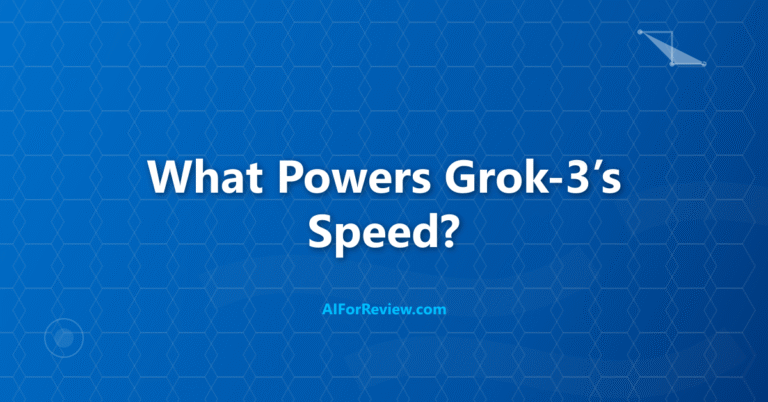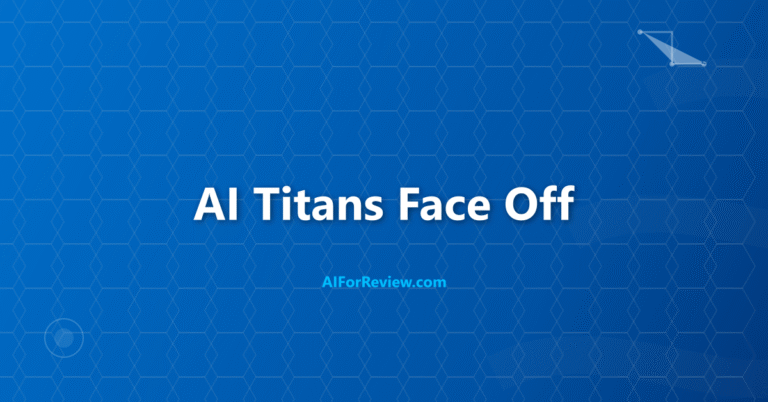Grok-3 Mini Naming Explained: Why xAI’s Model Names Cause Confusion The Grok-3 Mini name from xAI turns industry logic upside down, making it tough for us to know which model is smaller, faster or more powerful. While most companies use “Mini” to signal a lighter version, xAI’s Grok-3 Mini stands alone as a separate flagship, leaving us wondering what the name really means and which model fits our needs best. Discover why this confusing naming choice matters for anyone trying to pick the right AI model.
Oh fantastic, xAI looked at the AI industry’s already chaotic naming conventions and thought “you know what this needs? Let’s make Mini models that aren’t actually mini versions of anything.” Because apparently following basic logic where “Mini” means “smaller version of the main thing” is too mainstream for Elon Musk’s company. It is like releasing iPhone 15 Pro Max Mini and expecting people to understand whether it is bigger or smaller than the regular iPhone 15.
But here is what makes this particularly maddening: xAI’s backwards naming convention creates genuine confusion for users trying to understand which Grok model they should actually use, while serving no apparent purpose other than making their product lineup as confusing as possible.
If you read my earlier posts about xAI’s inflated benchmark claims and computing power marketing, you will see that their naming confusion fits perfectly into their pattern of prioritizing marketing gimmicks over user comprehension and practical utility.
The Industry Standard That xAI Completely Ignores
Every major AI company follows the logical convention where “Mini” indicates a smaller, more efficient version of a flagship model, but xAI decided to throw this standard out the window for no apparent reason.
OpenAI uses GPT-4o-mini to indicate a smaller, faster version of GPT-4o with reduced capabilities but better efficiency. Users immediately understand that the mini version trades some capability for speed and cost savings.
Google follows similar patterns with Gemini models, where smaller variants are clearly positioned as efficient alternatives to flagship models rather than separate product lines with unclear relationships.
Anthropic’s Claude naming maintains clear hierarchies where users can understand model relationships and choose appropriate variants based on their specific needs and resource constraints.
xAI’s decision to treat Grok-3 Mini as a separate model line rather than a variant of Grok-3 breaks user expectations and creates unnecessary confusion about model capabilities and positioning.
Naming Convention Comparison:
| Company | Flagship Model | Mini/Small Variant | Relationship | User Understanding |
|---|---|---|---|---|
| OpenAI | GPT-4o | GPT-4o-mini | Clear hierarchy | Intuitive |
| Gemini 2.5 Pro | Gemini 2.5 Flash | Speed vs capability | Logical | |
| Anthropic | Claude 3.5 Sonnet | Claude 3.5 Haiku | Size-based tiers | Understandable |
| xAI | Grok-3 | Grok-3 Mini | Unclear relationship | Confusing |
The naming deviation creates problems for users familiar with industry standards and expecting logical model relationships.
The Capability Confusion Crisis
xAI’s naming convention makes it impossible for users to understand which model is actually more capable or appropriate for their specific needs without extensive research.
Traditional “Mini” models are designed for users who need faster responses and lower costs while accepting reduced capability. xAI’s Grok-3 Mini appears to be positioned differently, but the company provides insufficient clarity about its actual relationship to Grok-3.
The confusion extends to pricing and availability, where users cannot predict which model will be more expensive or accessible based on the names alone, unlike other AI companies where naming conventions provide clear guidance.
Development teams trying to choose between Grok models face unnecessary complexity in understanding performance tradeoffs and optimization focuses that should be apparent from logical naming conventions.
The Marketing Logic That Makes No Sense
xAI’s backwards naming convention serves no apparent marketing purpose while creating significant user experience problems that could easily be avoided with conventional naming.
The company gains no competitive advantage from confusing naming that makes their models harder to understand and compare against competitors with clearer product positioning and hierarchy.
The naming confusion potentially reduces adoption by making it more difficult for users to choose appropriate models, creating barriers to entry that benefit competitors with more logical naming systems.
The backwards convention also makes it harder for xAI to communicate model capabilities and positioning in marketing materials, documentation, and user education efforts.
The Real-World Impact on Users
The naming confusion creates practical problems for developers and organizations trying to evaluate and deploy xAI’s models in production environments.
Technical teams waste time researching model relationships and capabilities that should be immediately apparent from logical naming conventions, increasing evaluation costs and slowing adoption decisions.
Budget planning becomes more complex when model names do not provide clear guidance about expected performance tiers, pricing structures, or resource requirements.
Integration planning suffers when developers cannot easily understand which model variants are appropriate for different use cases or deployment scenarios.
The confusion also affects documentation, training materials, and internal communications where teams need to clearly distinguish between model options and their appropriate applications.
How This Compares to Successful Naming
Examining successful AI model naming conventions reveals how xAI could improve user understanding and adoption through more logical product positioning.
Apple’s device naming provides a useful parallel, where “Mini” consistently indicates smaller, more affordable versions of flagship products with clear capability and pricing relationships.
Software industry conventions treat “Mini” as indicating reduced feature sets or resource requirements, creating predictable user expectations that xAI violates without apparent benefit.
The automotive industry uses size-based naming that helps consumers understand product relationships and choose appropriate options based on their needs and budgets.
What xAI Should Have Done
Better naming conventions could maintain xAI’s product differentiation while providing clearer user guidance about model capabilities and appropriate use cases.
Using descriptive names like “Grok-3 Fast” and “Grok-3 Deep” would communicate actual model characteristics rather than creating confusion with backwards size designations.
Maintaining the “Mini” convention for a genuinely smaller version of Grok-3 would meet user expectations while allowing xAI to introduce additional model variants with clear positioning.
Providing detailed documentation about model relationships and optimization focuses could partially address naming confusion, though logical naming would be more effective.
The Competitive Disadvantage
xAI’s confusing naming convention creates competitive disadvantages that benefit other AI companies with clearer product positioning and user communication.
Users comparing AI models may choose competitors with more understandable naming rather than investing time to research xAI’s backwards conventions and unclear model relationships.
Enterprise customers evaluating AI solutions prefer vendors with clear product hierarchies that facilitate planning, budgeting, and integration decisions.
The naming confusion also makes it harder for xAI to build user loyalty and repeat usage when customers cannot easily understand or remember which model worked well for their specific applications.
Industry Implications
xAI’s naming problems contribute to broader AI industry communication issues that make it harder for users to evaluate and adopt AI technologies effectively.
The pattern of confusing naming conventions across AI companies reduces user confidence and slows adoption by creating unnecessary barriers to understanding and comparing available options.
Clear industry standards for AI model naming could benefit all companies and users by reducing confusion and facilitating better decision-making about AI tool selection and deployment.
Key Lessons for AI Users
The Grok-3 Mini naming confusion teaches important lessons about evaluating AI models based on actual capabilities rather than making assumptions from potentially misleading names.
Always research specific model characteristics and performance rather than relying on naming conventions that may not follow industry standards or logical patterns.
Focus on practical testing and evaluation rather than assuming that familiar naming patterns apply across all AI companies and model families.
Demand clearer documentation and communication from AI companies about model relationships, capabilities, and appropriate use cases regardless of naming conventions.
The Path Forward
Understanding xAI’s naming problems helps users navigate the confusion while advocating for better communication standards across the AI industry.
The backwards naming convention demonstrates the importance of user-focused product positioning over marketing gimmicks that create confusion without providing clear benefits.
Users should prioritize AI companies that communicate clearly about model capabilities and relationships rather than those that create unnecessary complexity through poor naming decisions.
The lesson extends beyond xAI to the broader need for AI industry standards that prioritize user understanding and practical utility over marketing creativity that serves company interests rather than user needs.
xAI’s Grok-3 Mini naming represents a missed opportunity to build user trust and adoption through clear communication, instead creating barriers that benefit competitors with more logical and user-friendly product positioning strategies.
Frequently Asked Questions
What is Grok-3 Mini from xAI?
Grok-3 Mini is a lightweight artificial intelligence model from xAI, designed to deliver fast and smart responses for logic-based tasks that do not require deep domain knowledge.
Is Grok-3 Mini just a smaller version of Grok-3?
No, Grok-3 Mini is not simply a reduced version of Grok-3; xAI treats it as a separate model line with its own optimization focus and capabilities, which is different from how most companies use the “Mini” label.
Why does the name “Mini” cause confusion with Grok-3 Mini?
The name “Mini” usually means a smaller or less powerful version of a main model, but in xAI’s lineup, Grok-3 Mini is positioned as a distinct flagship model, making it unclear which model is more capable for certain tasks.
How does Grok-3 Mini compare to Grok-3 in terms of performance?
Grok-3 Mini offers faster responses but may sacrifice some accuracy compared to the main Grok-3 model, which is designed for more complex and demanding tasks.
What kind of tasks is Grok-3 Mini best suited for?
Grok-3 Mini is best for logic-based tasks that do not need deep subject expertise, and it is a good choice when speed is more important than the highest possible accuracy.
Are there different versions of Grok-3 Mini?
Yes, there are versions like Grok-3 Mini and Grok-3 Mini Fast, which use the same underlying model but differ in response speed and cost, with the “Fast” version offering quicker replies at a higher price.
How does Grok-3 Mini differ from Grok-3 Reasoning?
Grok-3 Mini is a non-reasoning model focused on speed, while Grok-3 Reasoning is designed to take extra time to review and refine its answers, making it better for tasks that need deeper thinking.
Why did xAI choose such a naming convention for Grok-3 Mini?
xAI’s naming does not follow industry standards, which can make it hard to understand the model hierarchy and may lead to confusion about which model to use for certain needs.
Can we easily switch between Grok-3 and Grok-3 Mini?
Yes, switching between different Grok models, including Grok-3 and Grok-3 Mini, is straightforward and can be done within the interface.
Where is Grok-3 Mini available?
Grok-3 Mini is available in specific regions, such as the US Midwest (Chicago), and may involve cross-region calls depending on where the model is hosted



